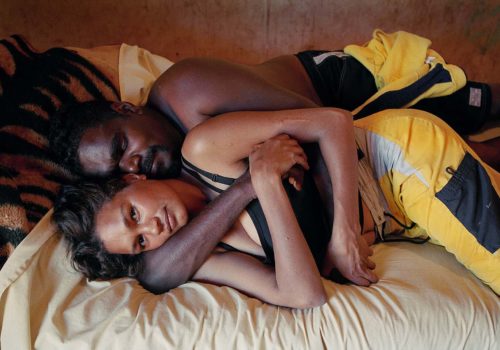Award-winning photojournalist Megan Lewis spent more than two and a half years living with the Martu Aboriginal “Mob” in Rudall River National Park in Western Australia, documenting their lives.
The trust and friendship Lewis developed with the Mob has resulted in an extraordinary body of work including the publication ‘Conversations with the Mob’, a 240-page book that delivers powerful insights into the Aboriginal culture and the Martu people with honesty, compassion and humor. Amongst other accolades Lewis has been awarded a prestigious Walkley Award for Excellence in Journalism for this work.
The Martu people are one of the last Indigenous groups in Australia’s Great Sandy Desert to come into contact with white people. This area of Australia has one of the harshest climates, with temperatures regularly soaring past 50°C in summer. It is literally in the middle of nowhere, hundreds of kilometers from the nearest township. Dry, hot and sparse, this land is alien to the majority of Australians. The Martu, or the Mob as they call themselves, number around 850 and inhabit a territory approximately the size of the United Kingdom. In the first six months that Lewis lived with the Mob she added more than 30,000km to her car’s odometer traveling across the desert between each of the four Martu settlements.
Lewis’ project has given the Martu people a mirror at which to look at themselves and make better decisions for a healthier, happier future, something all human beings aspire to. And she has become so invested in this community that she has gone beyond the role of photojournalist, to work with the Mob to improve the health of the children as well.
In her book Lewis talks about how she almost lost her resolve to continue with the project, so confronting was the environment as well as the cultural gulf that separated her and the Mob.
“I remember one particular day…after living with the Martu for three months I was hitting the wall. At around 48°C it wasn’t the hottest day by desert standards. I drove out of camp and found myself sitting under a lone Acacia bush. Ants and flies were crawling in every available orifice and I was thinking that I now knew what it felt like to go troppo”.
But instead of giving up, she decided the only way to live with the Martu was to forget her Western ways and embrace the desert life. She threw in her full-time job with the Australian newspaper, left behind worldly possessions (other than her camera gear) and immersed herself in the desert culture. She says, “From that moment on, my relationship with the mob became real and our journey together, with all its unexpected turns, dramatically deepened our mutual trust and understanding”.
This largely self-funded project clearly became a personal journey and the resultant works are heavy with emotion. As Lewis says, “In the end it has given me more personal riches than I ever could have imagined. This is a book of marpan (healing) for whitefellas and Martu alike. It is my wish that my photographs and the mob’s stories will allow hearts to open, that this book will serve as a bridge across a great cultural divide ”.
Alison Stieven-Taylor
Conversations with the Mob
Megan Lewis
Publisher: University of Western Australia
ISBN 978 19214010 3 9 (hbk.)
















